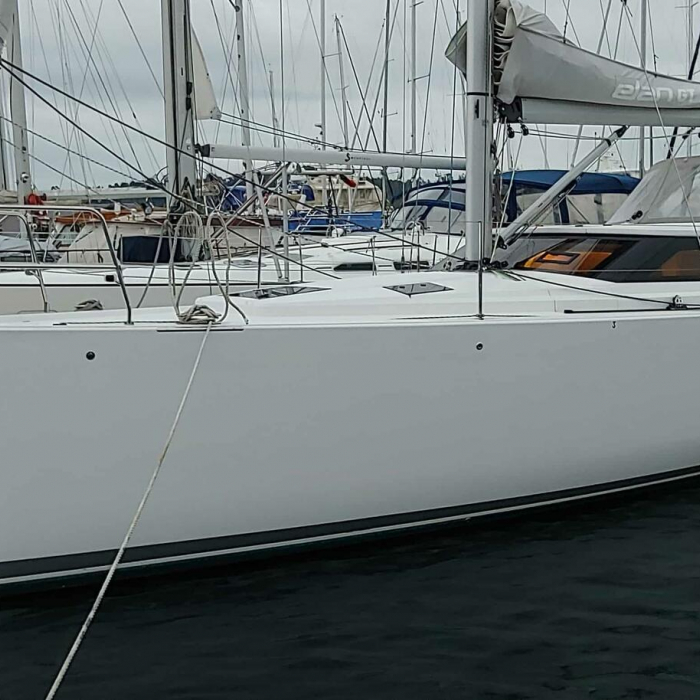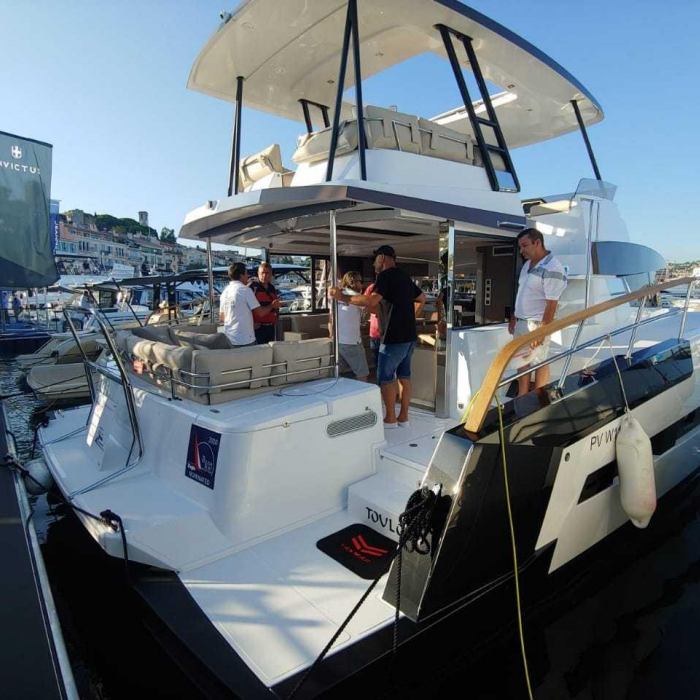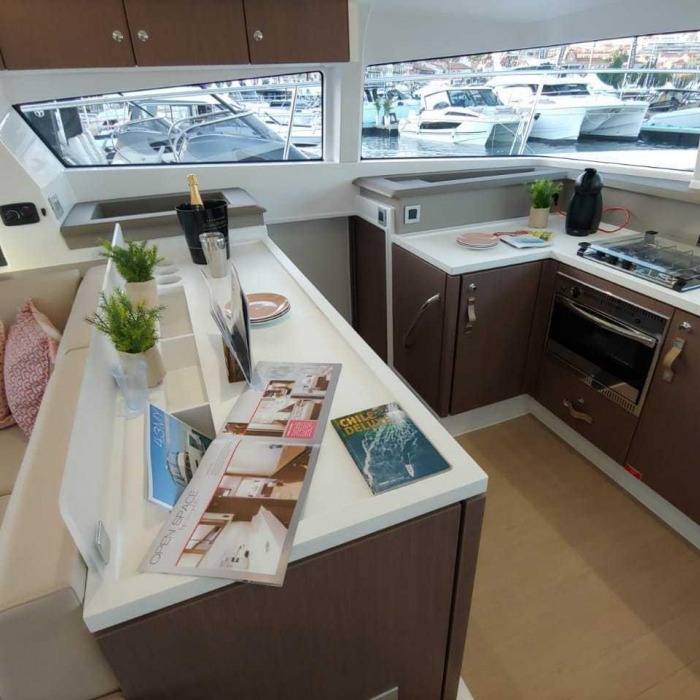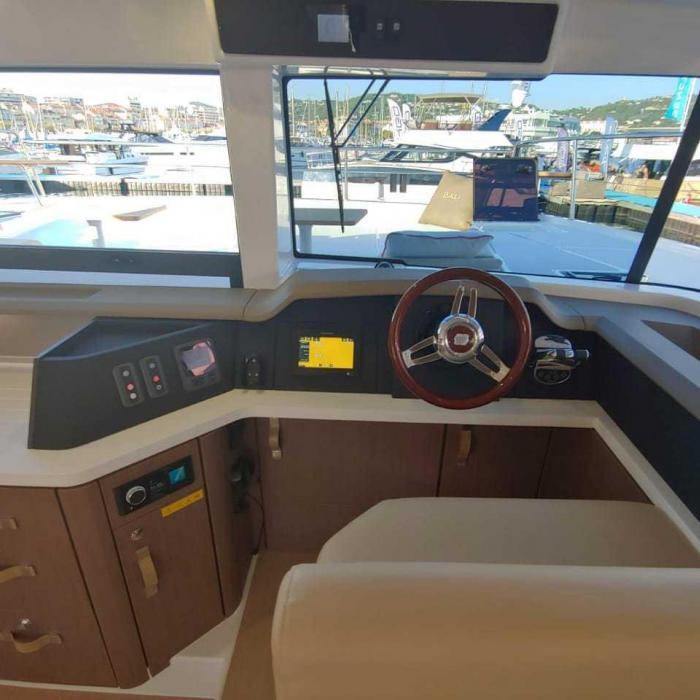Yacht Charter Las Galletas

 gift
giftAlboran Charter

 gift
giftWindmade SpA
Windmade SpA
 gift
giftWindmade SpA
Showing 4
Save to selection
The winds of Las Galletas
Mistral (NW)
Mistral winds are cold and dry winds that originate in the Rhône Valley and can affect the western Mediterranean, including the area of Las Galletas in Spain. These winds are most commonly experienced in the winter and spring months and can reach speeds of up to 120 km/h, making them a significant weather event for the region. The Mistral wind is known for its strong gusts and can cause damage to buildings, power lines, and trees. It can also make travel difficult, especially for high-sided vehicles and boats. If you are traveling to Las Galletas during the winter or spring months, it is advisable to check the weather forecast and be aware of the potential for strong winds.
Mistral (NW)
The Mistral wind is a strong, cold and dry wind that blows from the northwest down the Rhone Valley in France and can sometimes affect parts of the Mediterranean coast of France and Italy. It is not typically experienced in Las Galletas, which is located on the southern coast of Tenerife in the Canary Islands.
Mistral (NW)
The Mistral winds are not typically associated with Las Galletas, as this type of wind is more commonly experienced in the Rhône Valley region of France. Las Galletas is located on the southern coast of Tenerife, which is part of the Canary Islands, and typically experiences trade winds blowing from the northeast.
Mistral (NW)
The Mistral winds are a type of wind that affect the Mediterranean region, including parts of southern Spain, such as Las Galletas in Tenerife. These winds are characterized by a strong, cold, and dry northerly flow of air, which can bring cooler temperatures and clear skies to the area.
Bora (NE)
The Bora wind is a cold and gusty wind that originates in the eastern Adriatic and can affect the western Mediterranean, including the area of Las Galletas in Spain. It is most commonly experienced in the winter months and can reach speeds of up to 100 km/h, making it a significant weather event for the region. The Bora wind is known for its strong gusts and can cause damage to buildings, power lines, and trees. It can also make travel difficult, especially for high-sided vehicles and boats. If you are traveling to Las Galletas during the winter months, it is advisable to check the weather forecast and be aware of the potential for strong winds.
Bora (NE)
The Bora winds are actually a type of wind that is more commonly associated with the Adriatic Sea and the Balkan Peninsula, rather than Las Galletas, which is located on the southern coast of Tenerife in the Canary Islands. The Bora is a cold and dry wind that typically originates from high pressure systems over central Europe, and then flows southeastward towards the Adriatic Sea. In Las Galletas, the prevailing winds are actually the trade winds, which blow from the northeast and bring cooler, drier air to the region. These winds are responsible for the pleasant climate that Tenerife enjoys, with mild temperatures and low humidity levels throughout the year. However, during certain times of the year, the trade winds can be affected by other weather systems, which can cause temporary disruptions in the weather patterns and produce gusty winds in Las Galletas and other parts of the island.
Bora (NE)
The Bora winds are not typically associated with Las Galletas, as this type of wind is more commonly experienced in the Adriatic Sea and surrounding regions. Las Galletas is located on the southern coast of Tenerife, which is part of the Canary Islands, and typically experiences trade winds blowing from the northeast.
Bora (NE)
The Bora winds, also known as the "Levante" winds, are a type of wind that affect the Canary Islands, including Las Galletas in southern Tenerife. These winds are caused by high-pressure systems that form over the eastern Atlantic, which cause a strong northeasterly flow of air over the islands. In Las Galletas, the Bora winds can bring gusts of up to 70 km/h and can last for several days at a time. These winds can have a significant impact on the local climate, causing cooler temperatures and rough seas. However, they can also be beneficial for activities such as windsurfing and kiteboarding.
Tramontana (N to NW)
The Tramontana wind is a cold and gusty wind that originates in the Pyrenees Mountains and can affect the western Mediterranean, including the area of Las Galletas in Spain. It is most commonly experienced in the winter and spring months and can reach speeds of up to 120 km/h, making it a significant weather event for the region. The Tramontana wind is known for its strong gusts and can cause damage to buildings, power lines, and trees. It can also make travel difficult, especially for high-sided vehicles and boats. If you are traveling to Las Galletas during the winter or spring months, it is advisable to check the weather forecast and be aware of the potential for strong winds.
Tramontana (N to NW)
Although Las Galletas is located on the southern coast of Tenerife, which is significantly further south than the areas affected by the Tramontana wind, it is still possible for the wind to impact the area, particularly during the winter months. However, the prevailing winds in Las Galletas are the trade winds, which blow from the northeast and bring cooler, drier air to the region for most of the year.
Tramontana (N to NW)
The Tramontana winds are not typically associated with Las Galletas, as this type of wind is more commonly experienced in the Mediterranean region. However, it is possible for this wind to affect the Canary Islands, including Tenerife, under certain weather conditions.
Tramontana (N to NW)
The Tramontana winds are a type of wind that can affect Las Galletas in southern Tenerife and other parts of the Mediterranean region. These winds are characterized by a strong, cold, and dry northerly flow of air, which can bring cooler temperatures and clear skies to the area. In Las Galletas, the Tramontana winds can bring gusts of up to 70 km/h and can last for several days at a time. These winds can have a significant impact on the local climate, causing cooler temperatures, rough seas, and reduced visibility due to blowing dust and sand.
Jugo (SE)
The Jugo wind is a warm and humid wind that originates in the eastern Mediterranean and can affect the western Mediterranean, including the area of Las Galletas in Spain. It is most commonly experienced in the autumn and winter months and can bring with it heavy rain and rough seas. The wind is caused by low pressure systems that form over the western Mediterranean and can reach speeds of up to 60 km/h. The Jugo wind can cause travel difficulties, especially for boats and high-sided vehicles, and can also lead to coastal flooding and erosion. If you are traveling to Las Galletas during the autumn or winter months, it is advisable to check the weather forecast and be aware of the potential for strong winds and heavy rain.
Jugo (SE)
The Jugo wind is actually a term used to describe a specific type of wind that is experienced in the Adriatic Sea, particularly in the coastal regions of Croatia and Montenegro. It is a warm and humid southeast wind that can bring heavy rain and stormy weather to the area. Las Galletas, which is located on the southern coast of Tenerife in the Canary Islands, is not typically affected by the Jugo wind. Instead, as mentioned in my previous response, the prevailing winds in Las Galletas are the trade winds, which blow from the northeast and bring cooler, drier air to the region. However, as with any coastal area, there can be variations in the wind and weather patterns depending on the time of year and other weather systems that may be present.
Jugo (SE)
The Jugo winds, also known as the Sirocco or the Southeast wind, are not commonly associated with Las Galletas, as this type of wind is more commonly experienced in the Mediterranean region. Las Galletas is located on the southern coast of Tenerife, which is part of the Canary Islands, and typically experiences trade winds blowing from the northeast.
Jugo (SE)
The Jugo winds, also known as the "Sirocco" or "Leveche" winds, are another type of wind that can affect Las Galletas in southern Tenerife, as well as other parts of the Canary Islands. These winds are warm and humid, and are caused by high-pressure systems that form over the Mediterranean and North Africa.
FAQ
Free Deposit Pack
With FDP (Free Deposit Pack), you have the chance to avoid a full security deposit and lock in your funds. Just pay 20% upfront (non-refundable), and experience a hassle-free journey. * The price of the FDP rises to 25% if booked less than 30 days before the charter.

























































